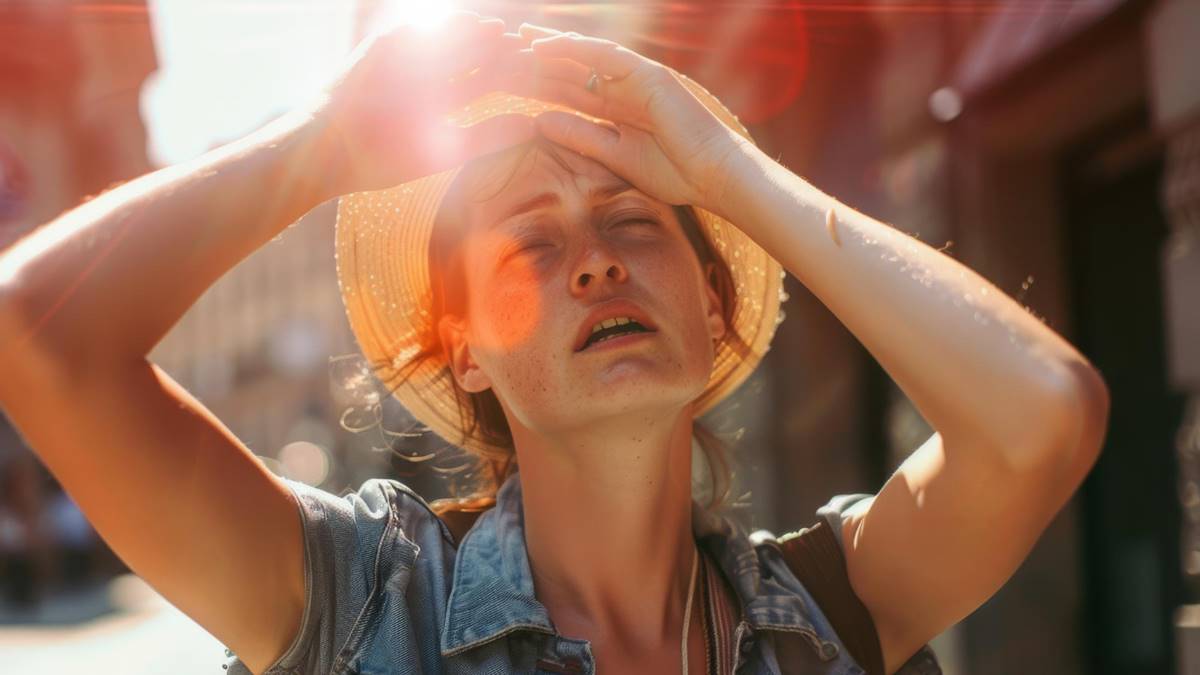Summer is a time to enjoy the warmth, the outdoors, and all the activities that come with the season. However, the heat that fuels our favorite summer moments can also present serious health risks — one of the most dangerous being heatstroke.
While it’s often confused with sunstroke, heatstroke can occur without direct sunlight, simply from the body overheating due to extreme temperatures, humidity, or physical exertion. It’s a condition that can develop rapidly and, if left untreated, may lead to organ damage or even death.
What Is Heatstroke?
Heatstroke is a severe form of heat-related illness that happens when the body’s internal temperature regulation fails. When exposed to high external temperatures or intense physical activity, the body may be unable to cool itself through sweating. As the core temperature rises above 40°C (104°F), vital systems begin to shut down.
This isn’t just overheating — it’s a medical emergency that needs immediate attention.
Who Is at Risk?
While anyone can suffer from heatstroke, some individuals are more susceptible:
-
Children, particularly infants and young kids
-
Older adults, especially those over 65
-
People with chronic illnesses, like heart disease or diabetes
-
Athletes and outdoor workers, during intense physical activity
-
Individuals on certain medications, such as diuretics or antihistamines
Environmental conditions such as high humidity, lack of ventilation, and poor hydration can dramatically increase the risk.
Symptoms You Should Never Ignore
Heatstroke can appear suddenly, and the symptoms are more severe than those of heat exhaustion. Key signs include:
-
Very high body temperature (above 40°C / 104°F)
-
Hot, dry skin, or sometimes heavy sweating
-
Confusion, irritability, or altered mental state
-
Rapid heartbeat and shallow breathing
-
Dizziness, headache, or fainting
-
Nausea or vomiting
-
Seizures or loss of consciousness
These signs can be life-threatening and should prompt immediate action. Waiting for the body to cool naturally or “sleeping it off” can lead to irreversible damage.
Emergency First Aid Steps
If someone shows signs of heatstroke, here’s what to do immediately:
-
Call emergency services — don’t delay.
-
Move the person to a cooler area, preferably indoors or in the shade.
-
Remove excess clothing to aid cooling.
-
Apply cold compresses, wet towels, or spray the person with cool water.
-
Use a fan or air-conditioning if available to help lower body temperature.
-
If the person is conscious, offer small sips of cool water, but do not force fluids or give them anything if they are disoriented or semi-conscious.
Never assume the condition will improve without intervention.
How to Prevent Heatstroke
Heatstroke is dangerous but also largely preventable. Follow these tips during hot weather:
-
Stay hydrated: Drink water regularly, even if you don’t feel thirsty.
-
Avoid intense activity during the hottest parts of the day (usually between 11 AM and 4 PM).
-
Wear loose, light-colored clothing that allows your body to breathe.
-
Take frequent breaks in shaded or air-conditioned areas.
-
Acclimate gradually to high heat if you’re new to a hot climate or returning to strenuous activity.
-
Avoid alcohol, which dehydrates the body.
-
Keep an eye on vulnerable individuals — children, elderly family members, and pets.
Also, never leave anyone — especially children or animals — in a parked car, even for a few minutes. The temperature inside can skyrocket to fatal levels in a matter of minutes.
Why Heatstroke Is So Dangerous
The danger lies in how quickly the body can lose control over its own cooling mechanisms. In just 10–15 minutes of intense heat exposure, a person can go from feeling mildly unwell to experiencing multi-organ failure. The heart, kidneys, liver, and brain are particularly vulnerable.
In some cases, even with treatment, long-term complications may occur — such as neurological damage or chronic fatigue. That’s why prevention and early response are key.
A Final Word: Don’t Underestimate the Heat
We tend to associate risk with winter storms, icy roads, or accidents. But the silent threat of heatstroke can be just as deadly. Understanding how it develops, recognizing the symptoms, and taking swift action can save lives.
So as you enjoy the sunshine this summer, remember: staying cool isn’t just about comfort — it’s a matter of health and safety.
Further reading:
👉 Symptoms of Heatstroke – When the Body Overheats
Recommended source: egeszseg-magazin.hu
